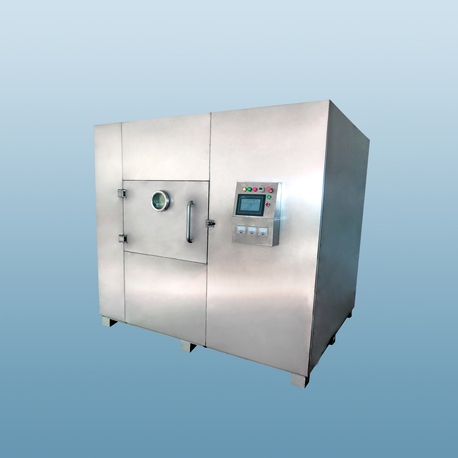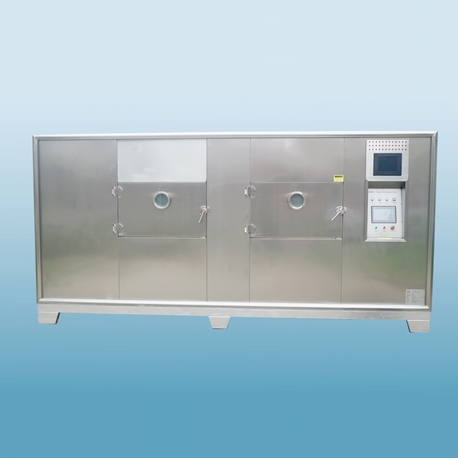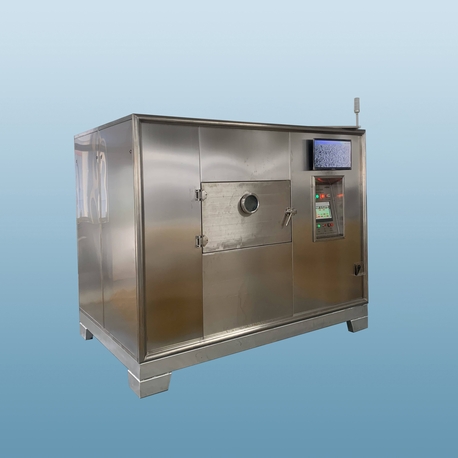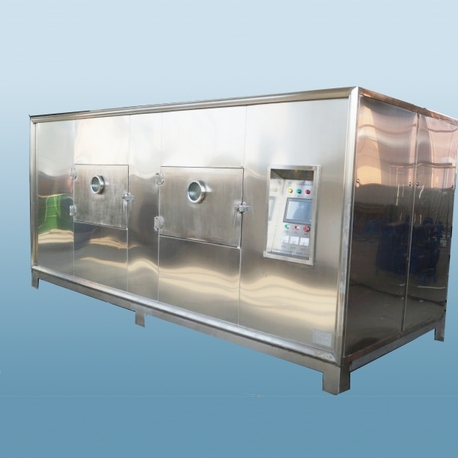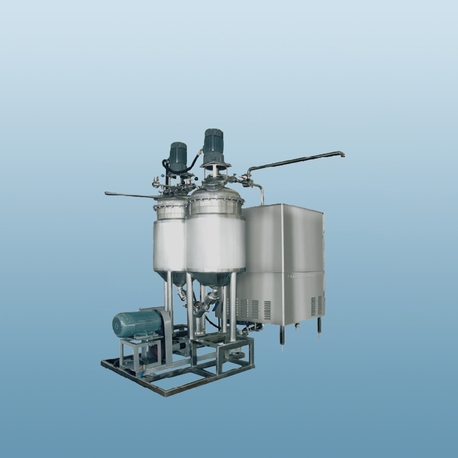In the demanding world of industrial processing, efficiency, consistency, and quality are non-negotiable. Among the most critical pieces of equipment for achieving these goals is the industrial dehydrator oven. Far beyond simple kitchen appliances, these sophisticated machines are engineered to remove moisture from vast quantities of materials with precision and reliability. From preserving the vibrant color and nutrients in fruits and vegetables to ensuring the stability of pharmaceutical powders, the industrial dehydrator oven is a cornerstone of modern manufacturing. This comprehensive guide delves into five essential aspects of these powerful systems, providing a detailed overview for businesses looking to invest in superior drying technology. We will explore the core technology, distinct advantages over traditional methods, diverse industrial applications, critical selection criteria, and the pivotal role of energy efficiency and control systems.
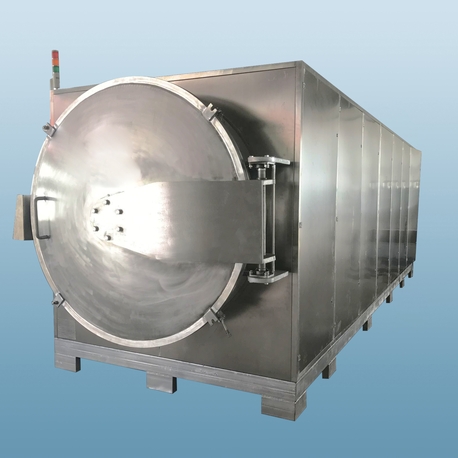
Understanding the Core Technology: How an Industrial Dehydrator Oven Works
At its heart, an industrial dehydrator oven operates on the principle of controlled dehydration. This process involves the removal of water or other solvents from a material through the application of heat and airflow, all within an enclosed, insulated chamber. Unlike simple drying, dehydration in an industrial context is a precise science.
The process begins when the product, placed on trays or conveyor belts, is loaded into the oven chamber. The dehydrator oven then activates its heating system, which can be electric, gas, or steam-based, to raise the internal temperature to a pre-set level. Crucially, the system simultaneously engages powerful, strategically placed fans that circulate the hot air uniformly throughout the chamber. This forced air circulation is what sets a high-quality dehydrator oven apart; it ensures that every part of the product load is exposed to the same temperature and airflow, eliminating cold spots and guaranteeing consistent drying results.
As the warm, dry air passes over the moist product, it absorbs the surface moisture. The now-humid air is then vented out of the chamber through exhaust systems, and fresh, dry air is introduced to continue the process. This cycle continues until the product reaches its target moisture content, which is critical for preservation, texture, and shelf life. The entire operation is managed by a sophisticated Programmable Logic Controller (PLC), which allows operators to set precise time-temperature profiles for different products, ensuring repeatability and quality in every batch.
Key Advantages of Using a Modern Dehydrator Oven
Investing in a modern industrial dehydrator oven offers a multitude of benefits that directly impact a company's bottom line and product quality. These advantages make it a superior choice compared to older, less efficient drying methods.
Unmatched Product Quality and Consistency: The precise control over temperature and airflow prevents case hardening—a phenomenon where the outside of a product dries and hardens too quickly, trapping moisture inside. This results in uniformly dried products with optimal texture, color, and nutritional integrity.
Enhanced Production Efficiency and Speed: Industrial dehydrator ovens are designed for high-volume processing. Their efficient heat transfer and air circulation can significantly reduce drying times compared to air drying or older oven technologies, leading to faster turnaround and increased throughput.
Extended Shelf Life and Improved Food Safety: By effectively reducing water activity (aw), a dehydrator oven inhibits the growth of microorganisms like bacteria, yeast, and mold. This preservation method dramatically extends the shelf life of food products without the need for artificial preservatives, while also meeting stringent food safety standards.
Operational Automation and Control: Modern dehydrator oven systems come with fully automated controls. Operators can program complex drying cycles, and the system will execute them with minimal supervision. This reduces labor costs, minimizes human error, and ensures that every batch is identical to the last.
Reduced Physical Footprint: Despite their high capacity, industrial dehydrator ovens are often designed with vertical racking or conveyor systems, making them space-efficient solutions for large-scale production facilities.
Diverse Industrial and Commercial Applications of Dehydrator Ovens
The versatility of the industrial dehydrator oven is one of its greatest strengths. Its ability to precisely control the drying environment makes it indispensable across a wide range of sectors.
Food Processing Industry: This is the most common application. A dehydrator oven is used to produce a vast array of goods, including:
Fruits and Vegetables: Creating snacks, ingredients for cereals, and trail mixes (e.g., dried mangoes, apple chips, tomato powder).
Meat and Seafood: Manufacturing jerky and dried fish products.
Herbs and Spices: Preserving flavor and aroma while reducing weight for transport.
Pasta and Noodles: Drying to the perfect texture for packaging and cooking.
Pharmaceutical and Biotechnology Sectors: Precision is paramount here. A dehydrator oven is used for:
Drying medicinal herbs and plant extracts.
Stabilizing sensitive biochemical materials.
Removing moisture from pharmaceutical powders and granules before tablet compression.
Chemical and Manufacturing Industries: In these fields, dehydration is often a crucial step in production.
Drying catalysts, pigments, and dyes.
Curing and drying coatings on various components.
Removing moisture from chemical compounds to ensure stability and prevent clumping.
Textile and Paper Industries: A specialized dehydrator oven can be used for drying coated textiles, paper pulp, and other fibrous materials after certain treatment processes.
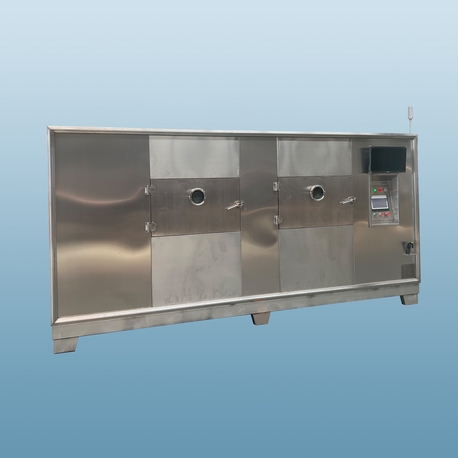
Critical Factors to Consider When Selecting a Dehydrator Oven
Choosing the right industrial dehydrator oven is a significant capital decision. Several key factors must be evaluated to ensure the equipment meets your specific production needs.
Heating Source: The choice between electric, natural gas, or steam depends on your facility's infrastructure, energy costs, and required temperature ranges. Electric ovens offer precise control, while gas ovens can be more cost-effective for high-temperature applications.
Airflow Design: The configuration of the airflow—horizontal, vertical, or a combination—is critical for uniform drying. The design must match the physical characteristics of your product to prevent uneven drying.
Capacity and Throughput: Assess your current and future production volumes. Ovens come in batch (rack, truck) or continuous (conveyor) configurations. A continuous dehydrator oven is ideal for high-volume, 24/7 operations, while batch ovens offer more flexibility for smaller, varied product runs.
Construction and Materials: The interior and components of the dehydrator oven must be compatible with your product and environment. For food or pharmaceutical use, stainless steel construction is essential for corrosion resistance and ease of cleaning.
Control and Automation Level: Determine the level of control your processes require. A basic thermostat may suffice for simple tasks, but a PLC with a touchscreen HMI (Human-Machine Interface) and data logging capabilities is necessary for complex cycles, recipe storage, and quality control documentation.
Safety and Compliance Features: Ensure the dehydrator oven is built to relevant industrial safety standards (e.g., UL, CE) and includes features like over-temperature protection, emergency stops, and proper insulation.
The Role of Energy Efficiency and Advanced Control Systems
In today's industrial landscape, operational cost savings and sustainability are directly linked to energy efficiency. A modern dehydrator oven is designed with this principle in mind. Advanced models incorporate heat recovery systems that capture waste heat from the exhaust and use it to preheat incoming fresh air, drastically reducing energy consumption.
Furthermore, the control system is the brain of the dehydrator oven, and its sophistication directly impacts efficiency and product quality. Modern PLCs allow for multi-stage drying profiles. For instance, a cycle can start at a lower temperature to remove surface moisture without case hardening and then ramp up to a higher temperature to efficiently remove bound moisture. The ability to precisely control humidity levels within the chamber is another advanced feature, preventing over-drying and saving energy.
These smart systems also provide remote monitoring and diagnostics, allowing maintenance teams to anticipate issues before they cause downtime. By investing in an energy-efficient dehydrator oven with a state-of-the-art control system, businesses not only reduce their carbon footprint and utility bills but also achieve a new level of process optimization and reliability.
The industrial dehydrator oven is far more than a simple drying machine; it is a sophisticated piece of process engineering that plays a vital role in determining the quality, safety, and profitability of countless products. From understanding the fundamental technology of heat and airflow to recognizing its vast applications across industries, it is clear that selecting the right system requires careful consideration. By prioritizing factors like airflow design, construction quality, control systems, and energy efficiency, businesses can make a strategic investment that pays dividends in product consistency, operational savings, and market competitiveness. A well-chosen dehydrator oven is not just an expense—it is a powerful tool for growth and innovation in the global industrial arena.



